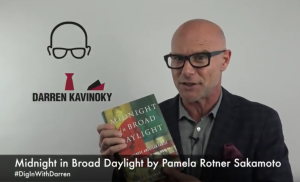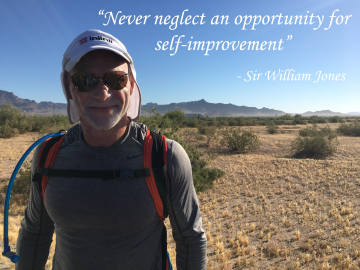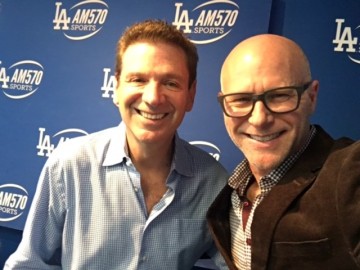Above: Darren Kavinoky visits Pearl Harbor, July, 2016
Midnight in Broad Daylight by Pamela Rotner Sakamoto, in the author’s own words is a story of “multiple angles” and “heartfelt encounters.” The gripping book walks through a humanized historical account of Japanese internment post Pearl Harbor.
In an exclusive interview for the Darren Kavinoky Book Club, the author discusses how the book has affected her, altered her view of history, and how the lessons of yesterday are relevant today. Pamela Rotner Sakamoto sees Midnight in Broad Daylight as an historical cautionary tale of “jumping to conclusions in the midst of hysteria.”
Interview with Pamela Rotner Sakamoto…
How did the book change you?
I have long been inspired by individuals who confront circumstances that they cannot control and, somehow, make the best of them. Certainly, Harry Fukuhara was one such man. Yet, as I interviewed widely and researched deeply, I expected to find blemishes and missteps that might disappoint me. Everyone is flawed and makes mistakes. [Click to see photos here.]
What I found with Harry and his family, however, is that they behaved admirably in the most distressing times. After all, the pressure of internment and the prospect of confronting a brother at war can only be termed life-altering dilemmas.
They coped with the unimaginable — how to reconcile that your own family has been hurt by the atomic bomb. They embraced the future. In the many years that this book required, I found myself uplifted by their lives, their openness, and their humanity. Yes, there was tragedy, but there was also perseverance, love and achievement. I hope that observing and learning from the Fukuharas have, in turn, made me a more understanding, compassionate person.

How has the story impacted and altered your view of history?
Before this book, I had written a dissertation and an academic book about a Japanese diplomat who rescued Polish Jews during the Holocaust. When I finished, I was proud of my research in the Japanese archives and my original analysis but was dismayed that my account hadn’t captured the heart of the story.
The records of diplomatic traffic between the Japanese consul and his superiors in Tokyo only showed one aspect of the episode. The heart of the story lay in the conversations between the diplomat and the Jewish refugees. I vowed that if I ever had another chance, I wanted to write a book that captured multiple angles and the heartfelt encounters between people. Midnight in Broad Daylight is that story.
More than ever, I believe that historians have to write history, not as dry, methodical accounts written from a distance, but as full-blooded portraits of people and their evolving concerns. When I throw myself into another book, I will continue to write narrative nonfiction. I will continue to focus on the overlooked pockets of history that enrich our understanding of our diverse nation. I will continue to look at minorities whose history may, otherwise, go unwritten.
How are lessons of that time relevant today?
The lessons of that period are all too timely. When I initially sought a publisher for my manuscript several years ago, I wrote that Midnight in Broad Daylight was a timeless tale that could be relevant today. My wonderful editor at Harper immediately grasped the story’s significance, but I sometimes wondered about others.
Sadly, there is no question that the story is more relevant than ever. After 9/11, the Muslim American community faced distrust and a rash of hate crimes. The Japanese American community was the first to step forward and denounce this harsh, unjust treatment.
In 2015 and 2016, we have heard inflammatory rhetoric that makes the prospect of internment plausible for a suspect minority. Imprisoning criminals is one matter; incarcerating an ethnicity or religious group is entirely different. And, yet, the two have been confused and conflated.
Midnight in Broad Daylight is a cautionary tale of the danger of jumping to conclusions in the midst of hysteria. In 1941 and 1942, the United States had been attacked on its own soil in Hawaii and the world was at war. In 2016, the fear is terror. We must use the lessons of history to guide our thinking and actions lest we make mistakes that damage lives and tarnish our intrinsic values as a glorious nation that has been, for so many, a beacon.
MORE ON MIDNIGHT IN BROAD DAYLIGHT
The July 2016 Darren Kavinoky Book Club selection, Midnight in Broad Daylight: A Japanese American Family Caught Between Two Worlds, by Pamela Rotner Sakamoto, is a compelling story that discusses the racism, anti-Japanese sentiment even before the attack, immigration issues, and difficulties that a 1st generation born in the U.S. to parents who are foreign citizens. It delves deeply in to World War ll and a Japanese American family split between two sides. READ MORE on Midnight in Broad Daylight

Darren Kavinoky Book Club July 2016 Midnight in Broad Daylight by Pamela Rotner Sakamoto
Midnight in Broad Daylight: A Japanese American Family Caught Between Two Worlds by Pamela Rotner Sakamoto
Are you reading Midnight in Broad Daylight with the #DKBookClub? Please share your thoughts with hashtag #DigInWithDarren.

Darren Kavinoky July 2016 Book Club
- #JourneyAcrossAmerica Update - May 10, 2017
- CNN Interview for my #RunAcrossAmerica - April 21, 2017
- #WhatsMyWin Training and Interview for my #RunAcrossAmerica - April 21, 2017





 Darren is an accomplished TV personality, attorney, interventionist, keynote speaker, and 'misbehavior expert' who appears constantly on countless TV and radio shows.
Darren is an accomplished TV personality, attorney, interventionist, keynote speaker, and 'misbehavior expert' who appears constantly on countless TV and radio shows.